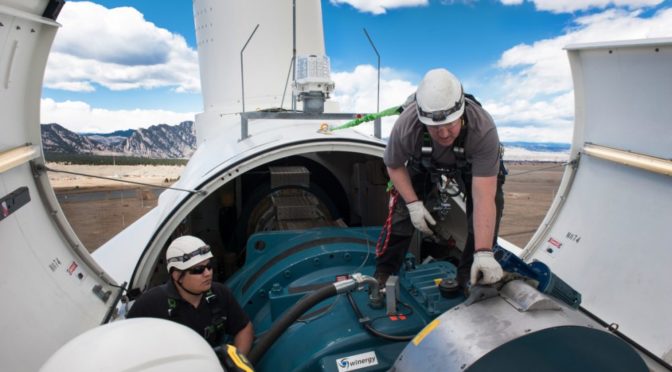Fifty-one years ago, Americans marked the first Earth Day – led by a Republican Congressman serving as its pioneering co-chairman. It was truly a bipartisan day for the country. Months later, a Republican President, Richard Nixon signed into existence the Environmental Protection Agency and heralded the passage of the Clean Water, Clean Air and Endangered Species Acts. Tragically over the decades since, the environment became a polarized, partisan issue. This Earth Day count me an optimist: I think we’ve found the secret sauce to reenergize the original bipartisan recipe of the very first Earth Day. It’s very simple: clean energy is the ultimate red state jobs plan.
Don’t believe me? There are already clean energy jobs in all 50 states. In the coming years, 1 million Americans will have direct clean energy jobs and clean energy will drive $1 trillion of investment into the American economy.
By 2030, where will many of these jobs be found? The answer may surprise you. Clean energy is growing exponentially in red states that former President Trump carried in 2016 and 2020. Think clean energy only belongs in deep blue California? Think again: before the decade is out, there will be more than 16,000 clean energy jobs in Wyoming where there are more cattle than Democrats. Already today, there are close to 40,000 clean energy jobs in Texas, and it’s projected to be home to almost 75,000 more within a decade. Texas isn’t alone. In ten years, North Carolina will be home to 30,865 clean energy workers, and almost 50,000 renewable jobs will be in Ohio.
As it turns out, it’s not just the geographies that are Republican — it’s sometimes been conservative political leadership and policies that have spurred this industry. It shouldn’t be a surprise that a conservative approach to the environment would reward low emissions, after all our planet is finite — we’ve only got one — so making it last as long as possible is the conservative thing to do. With a Republican governor and legislature, Ohio reduced carbon emissions by about 30% from 2005 to 2014, and withstood pressure to eliminate or soften strong renewable-energy standards. The impact? Half-a-million jobs created, close to six thousand directly in clean energy.
Clean power can also appeal to a red state virtue of cost effectiveness. Because wind and solar’s costs have fallen by 70 and 90 percent respectively over the past decade, clean energy is now the most affordable energy. Technological improvements also mean clean power is more reliable than ever, and Americans of all political persuasions are demanding access to it.
Similarly, you can imagine the appeal in a conservative movement focused on the new space race – energy competition with an ascendant China. The U.S. invented clean energy. But over the past decade, China became an energy superpower. The Global Commission on the Geopolitics of Energy Transformation declared China the world’s leader in solar, wind, batteries, and electric vehicles. Why resign ourselves to a world in which China holds 150,000 renewable energy patents – 30 percent of the world’s total. Why accept second place when we can win? It will take Republican backing to ensure that Main Street America, not Beijing, wins that distinction.
This Earth Day, I can imagine a budding coalition of conservative Republicans leading the clean energy revolution – because, after all, to paraphrase Willie Sutton, “that’s where the jobs are.” But more than that, it’s where the opportunities lie for American leadership in the private sector, and in cities, states, and the federal government. President Biden sums up the United States in one word: possibilities. Any Republican could just as easily hear Ronald Reagan saying, “there are no great limits to growth because there are no limits of human intelligence, imagination, and wonder.” As the world moves to a 21st century economy powered by clean energy, it’s once again time to harness that uniquely American spirit of innovation to make new investments, and deliver benefits to local communities, the environment, and U.S. families and businesses.
On this Earth Day, let’s start to make the environment bipartisan again – beginning with the best red state jobs plan in generations, clean energy.


